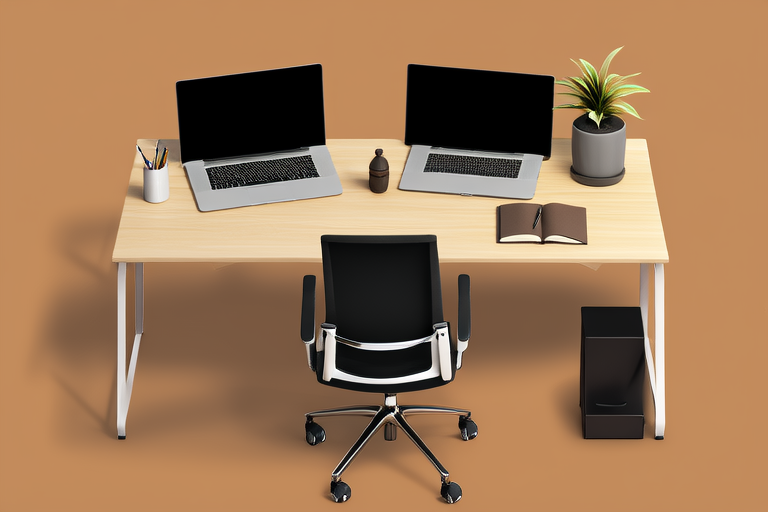Master the Art of Desk Space Optimization: A Complete Guide to Efficient Workspace Organization
Introduction
In today’s fast-paced world, having an organized workspace is more important than ever. Whether you’re working from home or in a bustling office, a cluttered desk can lead to decreased productivity and increased stress. Proper desk space optimization not only enhances your efficiency but also promotes a healthier work-life balance. In this comprehensive guide, we will explore various strategies and tips to help you create an efficient and productive workspace tailored to your needs.
Understanding the Importance of Desk Space Optimization
Before diving into specific techniques, it’s essential to understand why optimizing your desk space matters. An organized desk allows for better focus, reduces distractions, and helps maintain mental clarity. Moreover, a well-organized workspace can improve your overall mood and reduce feelings of overwhelm. By decluttering your desk, you free up both physical and mental space, enabling you to concentrate on tasks more effectively.
The Psychology Behind a Clean Desk
Research has shown that a clean and organized environment can positively impact cognitive functions such as memory retention and problem-solving abilities. When your workspace is clutter-free, your brain doesn’t have to process unnecessary visual stimuli, allowing it to focus on the task at hand. Additionally, maintaining a tidy desk can boost your confidence and self-esteem, contributing to a more positive outlook on work.
Benefits of an Optimized Workspace
- Increased Productivity: Less time spent searching for misplaced items means more time dedicated to actual work.
- Reduced Stress: Clutter can be overwhelming; a neat desk helps alleviate stress and anxiety.
- Improved Focus: Minimal distractions allow for deeper concentration and higher-quality output.
- Enhanced Creativity: A clean workspace can stimulate creative thinking by providing a calm environment conducive to brainstorming.
Key Strategies for Desk Space Optimization
Optimizing your desk space involves more than just tidying up. It requires thoughtful planning and strategic organization. Here are some key strategies to consider when setting up your ideal workspace.
Declutter Regularly
One of the most effective ways to optimize your desk is through regular decluttering. Start by removing any items that don’t serve a purpose in your daily routine. This includes old papers, unused supplies, and personal items that aren’t necessary for work. Consider using storage solutions like file organizers, drawer dividers, or desk trays to keep essentials within reach while keeping everything else out of sight.
Step-by-Step Guide to Decluttering Your Desk
- Sort Items: Separate items into categories (e.g., documents, electronics, stationery).
- Discard Unnecessary Items: Remove anything that hasn’t been used in over six months.
- Organize Remaining Items: Use containers or labels to keep similar items together.
- Maintain Order: Set aside time each week to reassess and tidy up.
Maximize Vertical Space
Vertical space is often overlooked but can be incredibly valuable in creating an efficient workspace. Utilize wall-mounted shelves, hooks, or cable management systems to store frequently used items without taking up valuable desktop real estate. This approach not only keeps your desk surface clear but also makes it easier to access essential tools quickly.
Tips for Maximizing Vertical Space
- Shelving Units: Install floating shelves above your desk for books, plants, or decorative items.
- Wall Hooks: Hang hooks behind your door for coats, bags, or even tools.
- Cable Management: Use clips or ties to keep cords organized and prevent tangling.
Invest in Ergonomic Furniture
Ergonomics plays a crucial role in maintaining comfort and preventing strain during long hours of work. Choose furniture that supports good posture and encourages movement. Adjustable chairs, standing desks, and monitor arms can significantly enhance your physical well-being while improving workflow efficiency.
Choosing the Right Ergonomic Tools
- Adjustable Chair: Ensure your chair supports proper back alignment and offers lumbar support.
- Standing Desk: Consider investing in a height-adjustable desk to switch between sitting and standing positions.
- Monitor Arm: Position your monitors at eye level to avoid neck strain.
Practical Examples and Case Studies
To better illustrate these concepts, let’s look at two real-world examples of individuals who successfully optimized their workspaces.
Example 1: Sarah’s Home Office Transformation
Sarah, a freelance graphic designer, struggled with a cluttered home office that hindered her creativity and productivity. After implementing several organizational strategies, she transformed her workspace into a functional and inspiring area. She started by decluttering her desk, removing all non-essential items, and investing in a vertical filing system. Additionally, she installed wall-mounted shelves for reference materials and decorative items. The result? A more focused and relaxed work environment that boosted her creativity and output.
Example 2: John’s Compact Office Setup
John works in a small office cubicle and needed to maximize limited space efficiently. He opted for slim-line filing cabinets and under-desk storage units to keep files and supplies neatly tucked away. To save desk space, he mounted a monitor arm and keyboard tray, freeing up valuable surface area for projects and inspiration boards. These changes not only improved his workflow but also reduced stress levels associated with feeling cramped.
Conclusion
Creating an optimized workspace is about more than just arranging furniture; it’s about fostering an environment that supports your goals and well-being. By regularly decluttering, maximizing vertical space, and investing in ergonomic equipment, you can transform your desk into a haven of productivity and peace. Remember, the key to successful desk space optimization lies in consistency and adaptability—continuously reassessing and adjusting your setup based on changing needs and preferences.
Actionable Steps Moving Forward
- Start Small: Begin with one area of your desk and gradually expand to other sections.
- Set Reminders: Schedule weekly check-ins to ensure your workspace remains organized.
- Seek Inspiration: Explore different organizational methods and find what works best for you.
By following these guidelines, you’ll be well on your way to mastering the art of desk space optimization and enjoying the benefits of a streamlined, efficient workspace.
